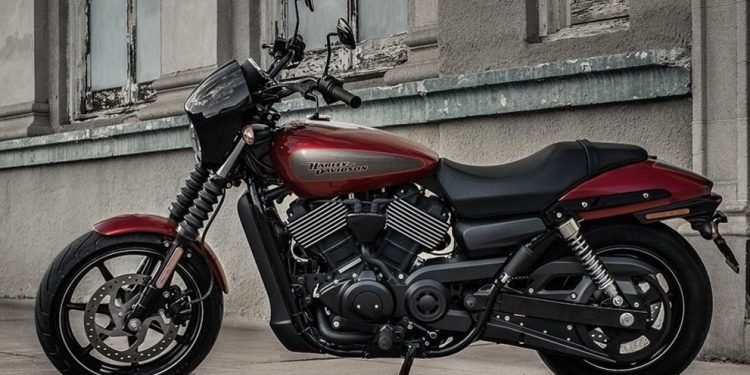New Delhi: With high customs duty impeding sales of its imported big bikes in India, Harley-Davidson is banking on the partnership with Hero MotoCorp to offer locally-produced premium models in the country, according to the company’s Chairman, President and CEO Jochen Zeitz.
India imposes 50 per cent customs duty on imported fully built-up bikes, which makes the American cult bike maker feel that partnering with Hero has turned out to be a good decision after deciding to exit its manufacturing operations in India three years back.
In an interaction with PTI, Zeitz noted that the tie-up with Hero MotoCorp is allowing the Milwaukee-based bike maker to go for “volume opportunities” by introducing a competitive product in the Indian market.
“And (there is) a lot of upside with much greater manufacturing capability that Hero brings in and the willingness to invest into the business, to really build us up as a brand. So, I would say it is the right decision,” he said.
Zeitz noted that the company would like to get its big bikes into the market without having to pay huge customs duty. “That (high customs duty) is the downside. But X440 is made in India. It does not have tariffs, so that’s a positive for those who want to get an experience of the Harley brand,” he said.
Last week, Harley and Hero introduced their first co-developed product in India — Harley-Davidson X 440 — with price starting at Rs 2.29 lakh. The bike is being produced by Hero MotoCorp at its Neemrana-based plant.
Harley-Davidson had announced to discontinue sales and manufacturing operations in India in September 2020. Before that it had an assembly plant at Bawal in Haryana. In October 2020, Hero MotoCorp and Harley-Davidson announced a partnership for the Indian market.
The deal envisaged Hero MotoCorp developing and selling a range of premium motorcycles under the Harley-Davidson brand in the country. It is also entrusted to take care of service and parts requirements for Harley bikes.
Asked if the iconic brand could make a comeback in the Indian market if the tariff issue gets resolved in future, Zeitz said: “That’s for the politicians to think. I mean, in theory, why would you have to pay such a tariff for a bike that comes into India versus a bike that goes into the US?
When asked if the partners planned to bring in more models in the country, Zeitz said the focus is currently on making the X440 successful in the Indian market.
“The more successful it is, the more opportunity we will have,” he noted. On Harley utilising India as a manufacturing base for export markets, Zeitz said: “We were manufacturing our 750cc also for the international market, so I am not ruling that out.”
He further said:”But right now, the focus is really to make sure that the product is successful in India – one important cornerstone is to get X440 to be a success in India, from there we can build and come up with other ideas.”
When asked if X440 would be shipped to overseas markets, he said: “It is not something we are discussing right now.”
On the company’s plans to introduce Harley Originals, its apparel range in India, Zeitz said: “That’s the opportunity down the road I would certainly look into. We have invested a lot into our apparel operation in Milwaukee in America. ”
The company sees a lot of potential in the segment, he said.
Commenting on the evolution of the high-end bike segment in India, Zeitz said the premium mid-segment is certainly a growing segment in the country.
He noted that Harley’s core segment is 975 plus cc bikes.
“But in terms of sales opportunity, that is still a relatively small segment in India due to the price it carries, and obviously amplified by the import duties that make it even more expensive than if you would buy a bike in America, for example,” Zeitz said.
He noted that eventually the bigger bike segment will also grow in the country but affordability will obviously be an issue if tariffs continue to be as high as they are at the moment.
There is a growing middle class who wants to afford more premium and luxury products. “We have seen that happening in China, and I am sure we will see the same thing happening in India,” he noted.
Elaborating on the company’s strategy across global markets, Zeitz said the company is focusing on the core segments that are providing the return on investment. The company has been phasing out, reducing its product complexity by more than a third, he added.
“In return, our profitability has gone up dramatically in the last three years as a company. So, I know that this industry is obsessed with unit sales and I am obsessed with profitability,” Zeitz said.
So, for the company the mandate is to make sure that it focuses on those segments where “Harley is truly Harley” and those are also the most desirable and most profitable segments, he added.
Zeitz noted that both China and India were growing very fast. “I look at the two most populous markets in the world as an opportunity and you need to think long term, right. You build your roots now in order to grow with the economy and which is why we are here really,” he said.
Harley has decided to work with local partners in the markets where it does not have the local know-how, Zeitz added.
Asked about Harley Davidson’s electric vehicle strategy he said one day, there certainly is going to be an electric Harley, but not in the near future.
“…Electrification is likely to grow in some markets faster than others. And we want to be the leader in electrification as a holding company,” he said.
Asked if the company is looking to introduce its electric bike range, Livewire in India, Zeitz said: “I don’t see that in the near future.”
PTI






































